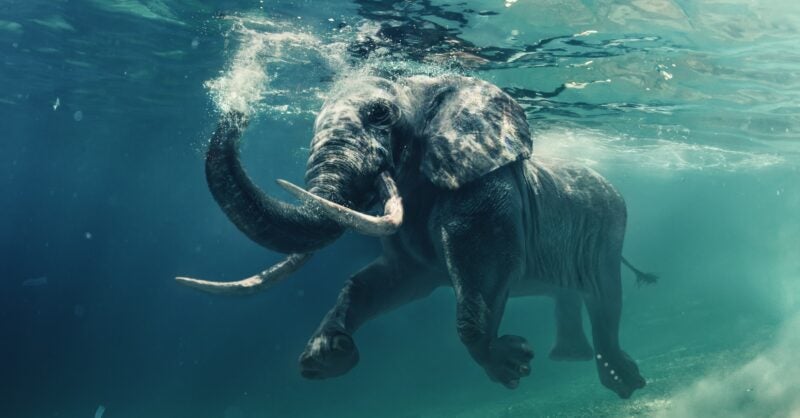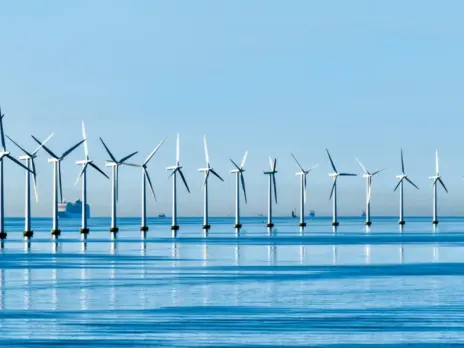
- From 2018 to 2022, there were only 26 blue bond transactions, totalling $5bn – less than 0.5% of the sustainable debt market.
- A Deloitte report highlights the urgency of an annual $175bn investment to conserve oceans, with $90bn necessary solely for marine pollution reduction efforts.
- Gabon’s $500m debt-for-nature transaction is a first for continental Africa, with proceeds used for ocean conservation.
Sustainable efforts remain unremittingly land focused. Water tends to get ignored. Although the first blue bond was sold by Seychelles in 2018 – a $15m 6.5% 10-year issuance – the structure still hasn’t captured the attention either of issuers or investors.
Blue bonds are financing instruments that earmark funds exclusively for ocean-friendly projects and critical clean water resources protection.
Between 2018 and the end of 2022, there were only 26 blue bond transactions [see chart] amounting to a total value of around $5bn. To put that into context, blue bonds represent less than 0.5% of the sustainable debt market, according to a paper from the University of Colombia’s Pieter Bosmans and Frederic de Mariz.
This is a drop in the ocean of what is needed. A Deloitte report estimates that $175bn investment a year is required to conserve the oceans with more than half of that – $90bn – necessary just to reduce marine pollution.
It is not difficult to see why blue bonds remain a niche interest for investors. As Kris Atkinson, fixed income portfolio manager for Fidelity in London points out, blue bonds are generally issued by low-income countries – like Seychelles, Belize, Indonesia, Ecuador and Barbados – that are heavily reliant on oceans and their resources.
“They tend to have poor credit ratings and are more exposed to extreme weather events, enough to turn off large swaths of investors,” he says. None of this has been helped by the lack of standards.
But the wind is changing. At the end of June, on the sidelines of the UN Ocean Conference in Lisbon, the International Finance Corporation (IFC), the International Capital Markets Association (ICMA), the United Nations Global Compact, the United Nations Environment Program Finance Initiative (UNEP FI), and the Asian Development Bank (ADB) collectively published their long-awaited blue bond guidelines.
“Blue finance offers tremendous opportunities in closing the blue financing gap and support a thriving sustainable blue economy,” says Paulo de Bolle, senior global director in the financial institutions group at IFC. “Internationally recognised guidance helps build investor confidence and catalyse investments.”
Debt-for-nature
A sign of this growing confidence in the market came on 15 August, when Gabon completed the first ever debt-for-nature transaction in Continental Africa in a $500m deal. The country’s president, Ali Bongo, said that he hoped that green or blue financial mechanisms would “grow significantly in coming years and help countries like Gabon”.
The new 6.097% 2038 bonds partially refinance the country’s existing sovereign US dollar-denominated Eurobonds dated 2025 and 2031. They were bought back at 96.75 cents in the dollar and 85 cents in the dollar respectively.
Although Gabon’s bonds were trading in junk territory, the rating on the new bonds has soared to a comfortable investment grade Aa2 by Moody’s, thanks to a political risk insurance policy from the International Development Finance Corp (DFC), the development finance arm of the US government.
DFC chief executive, Scott Nathan, said that the insurance illustrates how it can “lift the credit profile of a bond issuance to deepen capital markets”.
DFC is sharing 50% of the risk with a group of eight private insurers: AXA XL, Fidelis MGU, Swiss Re Corporate Solutions, Chubb Global Markets, Sovereign Risk Insurance, Apollo, Mosaic and Vantage Risk Specialty Insurance Company.
Arranged by Bank of America, which was the sole initial purchaser, structuring agent and bookrunner on the deal as well as sole dealer manager for a tender offer, the deal will allow the country to contribute up to $163m in new funding for ocean conservation for the 15-years of the bond.
“This project in Gabon unlocks an enormous stream of funding for conservation,” says Jennifer Morris, chief executive of global environmental organisation The Nature Conservancy, which helped arrange the deal.
Gabon has committed to protect 30% of its lands, freshwater systems and ocean by 2030.
The country is home to the world’s largest population of leatherback turtles, as well as olive ridley turtles and Atlantic humpback dolphins.
Funds are earmarked for a marine spatial plan to increase the area of ocean under protection, improve management in currently protected areas and all new protected areas, and support Gabon’s sustainable blue economy. It will also help the country strengthen and enforce regulations in its fishing industry.
The Nature Conservancy estimates that $610m is lost every year in Gabon to illegal, unreported and unregulated fishing.
Good branding, bad risk?
For Gabon, the deal appears to be a winner. Quite apart from extending the duration of the country’s debt, it has lowered the country’s cost of borrowing significantly. The interest rate on the new debt is both less than the original 6.625% and 7% coupons on Gabon’s 2025s and 2031s and significantly lower than the north of 10% which is where the bonds were trading in the secondary market as the deal completed.
On top of that, the deal provides what Gregory Smith, emerging markets fund manager at M&G Investments in London, calls “good branding for countries wanting to market their sustainability credentials to attract investment”.
But for the investor, it is not perfect. Smith explains that Gabon’s debt risk has not been removed. “It is a puzzle why the 2025s were not the main focus of the tender,” he says.
Bankers accepted only $95m of the 2025s offered by investors, leaving $605m, whereas they took $405m of the 2031s. This means, he says, that even after the deal a major debt risk remains.
Paul Greer, portfolio manager of emerging markets debt and FX at Fidelity International in London, cautions about the DFC credit guarantee. “It is not 100% fool proof,” he says.
While it does cover the principal of the bond, it doesn’t cover the coupons between now and maturity. On top of that, he continues, the new bond is also likely to suffer from poor secondary market liquidity and is unlikely to enter mainstream emerging market debt benchmarks.
All true, but investors are there to take risks and carping at such a granular level can distract from the fact that it is a step in the right direction. A handful of other African and Caribbean countries together with Sri Lanka are tipped to be working on similar deals. As Fidelity’s Atkinson says, “The capital is out there – the task now is to mobilise it”.
[Read more: Why blue bonds and ESG debt swaps remain niche]





